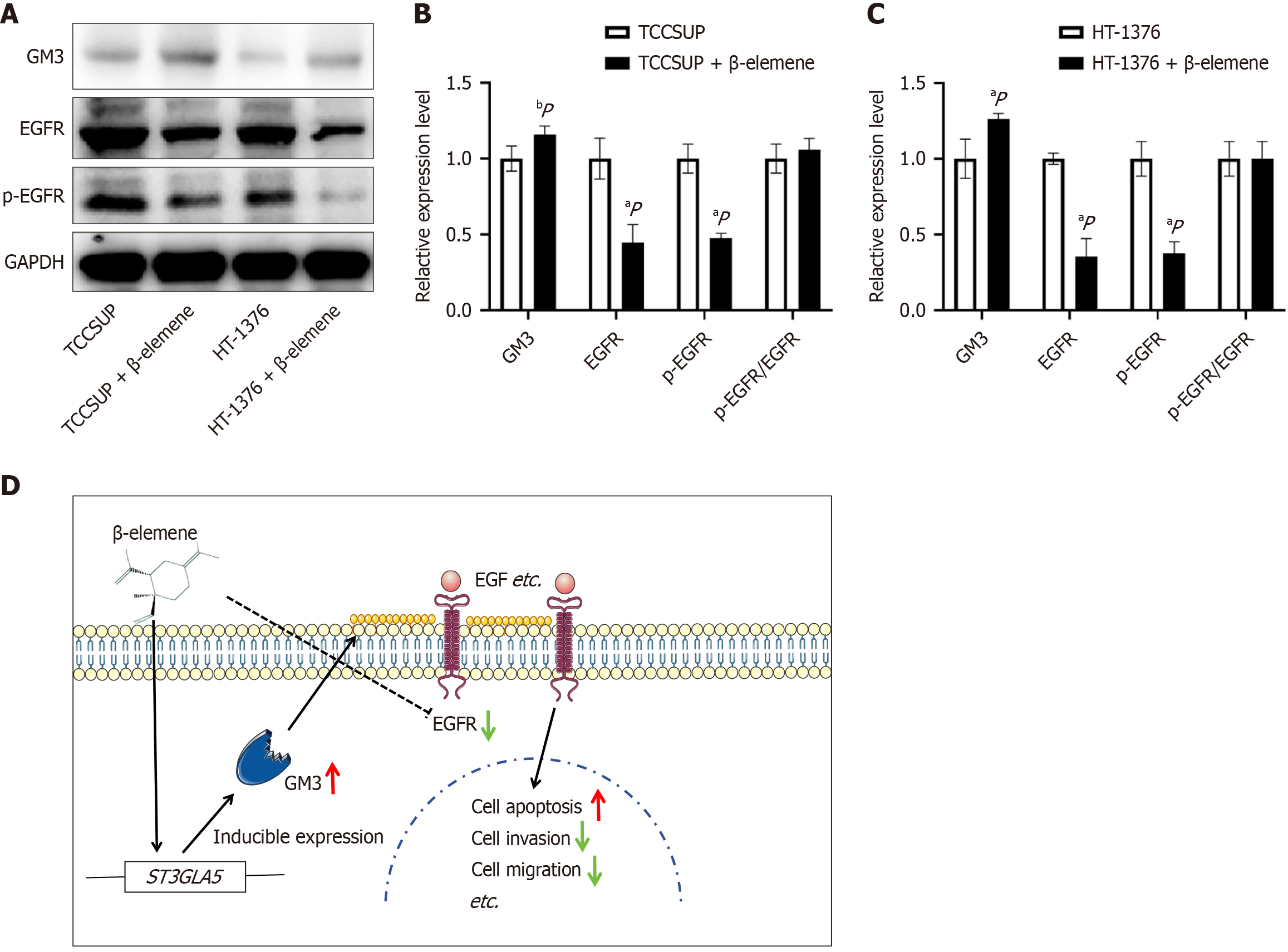Copyright
©The Author(s) 2025.
World J Clin Urol. Aug 12, 2025; 14(2): 109933
Published online Aug 12, 2025. doi: 10.5410/wjcu.v14.i2.109933
Published online Aug 12, 2025. doi: 10.5410/wjcu.v14.i2.109933
Figure 6 The expression changes of GM3-EGFR axis proteins after stimulation by β-elemene and the existing signal transduction mechanisms.
A: The Western blot analysis specifically demonstrated differential protein expression in β-elemene treated and non-treated states; B and C: Statistical analysis revealed that GM3 expression increased following β-elemene treatment, while epidermal growth factor receptor (EGFR) and phosphor EGFR (p-EGFR) expression significantly decreased (aP < 0.05). However, the p-EGFR/EGFR ratio did not show a significant change (bP > 0.05); D: A schematic diagram illustrating the findings of this study is presented.Both GM3 and EGFR proteins were expressed on the membrane surface, where their expression levels exhibited a competitive and complementary relationship. β-elemene concurrently upregulated the expression of both GM3 gene and protein, while downregulating the expression of EGFR protein and its phosphorylated form. This modulation ultimately promoted apoptosis and inhibited the migration and invasion of bladder cancer cells.
- Citation: Li FY, Wang Y, Zhang YJ. β-elemene inhibits bladder cancer cell through the expression of cell membrane protein GM3. World J Clin Urol 2025; 14(2): 109933
- URL: https://www.wjgnet.com/2219-2816/full/v14/i2/109933.htm
- DOI: https://dx.doi.org/10.5410/wjcu.v14.i2.109933









